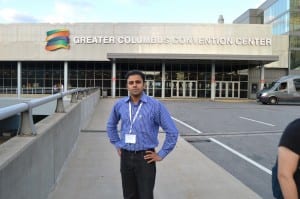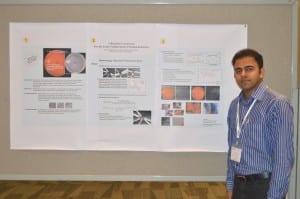Two papers from academics in the School of Computer Science were presented at the world’s premier computer vision event.
The CVPR conference, which took place between June 24-27 in Ohio, is the highest-ranked venue in Computer Science.
According to Google Scholar Metrics, it is also the top publication venue in the field of computer vision and pattern recognition.
This year the University of Lincoln’s School of Computer Science was represented with two papers.
The first is ‘Gauss-Newton Deformable Part Models for Face Alignment in-the-Wild’ by Dr Georgios Tzimiropoulos and Maja Pantic.
Dr Tzimiropoulos’ research finds applications in face recognition, facial expression analysis and human behaviour understanding. In particular, prior to recognising someone’s identity or understanding his/her facial expressions, a computer program must be able to accurately detect and localise the facial parts like the mouth and the eyes, as well as track their deformable motion in video.
This very well-known computer vision problem, also known as face alignment, is a difficult one, especially when the faces to be analysed are captured in-the-wild, i.e. there is no control over illumination, image resolution, and head pose variations or occlusions. Dr Tzimiropoulos’ algorithm aims to address all of these challenging cases. A video with illustrative face tracking results can be found at: http://www.youtube.com/watch?v=MjCSWTFBrFg
The second paper is ‘A Bayesian Framework for the Local Configuration of Retinal Junctions’ by Touseef Qureshi, Professor Andrew Hunter and Dr Bashir Al-Diri.
This focusses on the development of a probabilistic system to accurately configure the broken vessels in retinal images.
Retinal images provide an internal view of the human eye (retina) that contains forests of blood vessels. These vessels provide useful information which can be used for diagnosing several cardiovascular and cerebrovascular diseases.
Computer-based automated extraction of significant features from the retinal vessels can help early diagnostics of these diseases.
The correct configuration of broken vessels into trees of arteries and veins is a prerequisite for extracting significant information from the vasculature.
Touseef said: “We achieve remarkable results in the initial experiments and intend to develop fully automated diagnostic system in future. Moreover, the proposed system can be optimized for other applications such as biometric security systems and road extraction using aerial images.”

